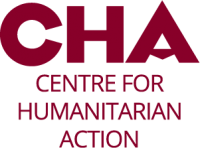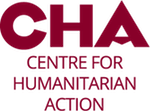| Author: | Sören Schneider, Katrin Radtke and Daniel Weller |
| Date: | 21. July 2021 |
Introduction
The impact of climate change will drastically increase the number of people displaced by disasters and extreme weather events over the upcoming decades. At the same time, its latent effects are already intensifying preexisting triggers of displacement like food insecurity and violent conflict, further exacerbating humanitarian crises across the world. In reducing negative impacts of disasters – including displacement – and the adverse effects of climate change more broadly, approaches of anticipatory humanitarian action have delivered promising results. Recent events like a lecture series on the anticipation of climate and disaster displacement or a high-level exchange on disaster displacement and anticipatory financing illustrate that climate and disaster displacement are already at the center of the humanitarian agenda.
The link between climate change and disaster displacement: Why does anticipatory humanitarian action matter?
From devastating floods in Bangladesh to tropical storms in Mozambique, extreme weather events are a major trigger for displacement and a driver of humanitarian crises. According to new data published by the Internal Displacement Monitoring Center (IDMC), three in four cases of internal displacement in 2020 could be attributed to weather-related events. With climate change, both the frequency and intensity of extreme weather events are expected to increase in many regions. Slow-onset processes, such as sea-level rise or soil degradation, further aggravate the problem.
The best way of tackling climate-induced displacement would certainly be based on long-term strategies to reduce greenhouse gas emissions and development cooperation. However, it is also clear that the issue of climate-induced displacement must be integrated into the humanitarian agenda in the short term. Humanitarians need to prepare for the worst-case scenario. In this context, innovative solutions are urgently needed in a humanitarian system that is already struggling to make ends meet. One such solution that may contribute to more adequate and efficient humanitarian responses necessitated by the increasing numbers of people displaced by disasters and a changing climate could be anticipatory humanitarian action.
Anticipatory humanitarian action and related approaches like Forecast-based Financing (FbF) aim at providing communities exposed to specific hazards with the necessary support and enable early humanitarian action before a disaster occurs. The focus of most anticipatory approaches has so far been on extreme natural events such as floods, storms, and droughts. However, more and more scholars aim at expanding the agenda of anticipatory humanitarian action and include, for example, situations of conflict. Even more recently, the International Federation of the Red Cross and the Red Cross Climate Center started to focus on the diverse impacts of disaster and published a policy brief on Fbf and disaster displacement.
In practice, the track record of anticipatory approaches appears promising with studies showing that these approaches can indeed reduce the costs for humanitarian agencies and produce better outcomes for the affected communities. However, anticipatory approaches are complex to implement and, so far, they have been mainly utilized by larger NGOs and actors within the UN system or the Red Cross/Red Crescent Movement. For anticipatory humanitarian action to keep pace with complex humanitarian crises around the globe and to be further integrated into the humanitarian mainstream, several challenges remain.
Methodological challenges: Gaps of Reliable Exposure and Impact Data
The most important prerequisite for anticipatory action to function is reliable data on exposure to and impact of disasters. Humanitarian practitioners need to know where an extreme event will occur, what the scope of the event will be, and what impact it will have on which populations to select, plan and implement the appropriate Early Actions. Regarding climate-induced displacement, this knowledge is hampered by severe data gaps.
First, there is still a significant lack of exposure data for many regions of the world. Especially for informal settlements, reliable data on population and infrastructure (e. g. condition of roads, buildings, etc.) are often fragmented or absent in the first place. In some regions, a lack of physical infrastructure to collect data on when and where certain extreme events will occur – e. g. due to absent or unreliable instruments to measure seismic activity, river levels or soil moisture – only exacerbates the problem. Open-Source-based initiatives and the increasing utilization of satellite technologies provide glimpses of hope, especially for the most vulnerable communities that are still absent on too many maps. However, consolidating efforts to connect practitioners and researchers is indispensable to make reliable exposure data available to the entire humanitarian community.
The same applies to impact data which is even more immediately related to the issue of displacement. Knowing who will be affected by an extreme event does not indicate if or when this event lead to displacement. This question is especially relevant against the background of compound risks of displacement created or exacerbated by climate change. Even with the most advanced models and solutions based on machine learning, it is difficult to predict how many people will be forced to leave at a certain point in time to one or more destinations due to the complex interactions of different natural hazards and man-made disasters with their various impacts. Existing models focusing on the anticipation of displacement may serve humanitarian practitioners for strategic planning, but they neither capture the complexity of migration decision-making processes nor do they necessarily provide easily accessible and precise inferences enabling early humanitarian responses to displacement. In other words, just because a lot of real-time information is available, knowledge gaps are not automatically closed.
It is therefore crucial to extend the localization agenda in humanitarian action to data collection and bring in local knowledge on which populations in a given region are most at risk of displacement. Approaches of community-driven data collection like participatory mapping can serve as first steps in this context. At the same time, the localization and scaling of data collection can only benefit humanitarians and affected communities alike, if it follows strict ethical standards. Beyond methodological challenges, anticipating displacement is a highly sensitive vocation – especially in the volatile contexts that humanitarian crises tend to occur. When increasing the availability of both exposure and impact data, humanitarian actors must carefully assess the risks associated with access to and ownership of this data to respect fundamental humanitarian principles like the ‘Do No Harm’-imperative at all times.
As in other areas of humanitarian aid, the following applies: not every organization has to reinvent the wheel and carry out its own analyses. Data from different sources and actors have to be integrated and the corresponding risk analyses should be made publicly available as far as possible. In the past few years, there have been great advances in data sharing. Particularly the Humanitarian Data Exchange (HDX) platform established by UN OCHA has improved humanitarian data access considerably. However, the recently published report on the State of Humanitarian Data Exchange for example estimates that “at the start of 2021, just 51 percent of relevant, complete crisis data [was] available across 27 humanitarian operations”. This shows that there is still great potential to establish and scale up inter-organizational initiatives that both possess the expertise to collect, harmonize, and share much-needed data and adhere to the necessary protective standards and are accountable to the humanitarian community on the other hand.
Practical challenges: Funding, training and interaction with other actors
Even in a world with broad availability of risk data and reduced uncertainty, challenges on a more practical level remain to be solved for anticipatory action to consolidate its initial successes.
The most pressing of these challenges is certainly to scale up funding for anticipatory action. The humanitarian consequences associated with climate change are unprecedented and the number of extreme weather events may grow even faster than expected. Even improved cost-benefit ratios of humanitarian action through Forecast-based Financing, increasing impacts of climate change and disaster displacement pose an existential threat to a humanitarian system that is already suffering from severe underfunding. Pilot initiatives like the START Fund Anticipation or the dedication of money from the UN’s Central Emergency Response Fund to anticipatory projects will hardly suffice to address the rising displacement crises imposed by the consequences of climate change. To avoid further fragmentation of the humanitarian system, such initiatives should be scaled up in a systematic and integrative way. Ideally however, the increasing volume of funds for anticipatory projects would be complemented by political reforms that position anticipatory humanitarian action higher on the international quality funding agenda, for example in the Grand Bargain context where it has not been considered as a key aspect for the quality funding stream. Making anticipatory action a priority of a “Grand Bargain 2.0” would not only make sure that more money becomes available for anticipatory projects, but it would also ensure that the existing scarce resources would be implemented in a different and more efficient way.
Unfortunately, funding alone will not solve the problem: For anticipatory approaches to be integrated deeper into the humanitarian community, not only monetary resources but also knowledge on how to implement these approaches needs to be more widely available. While, fortunately, conceptual guidance abounds, acquiring the technical expertise to gather and analyze risk data and climatological forecasts can be difficult. Tailored hands-on training for humanitarian practitioners helps to transmit this knowledge especially to smaller and medium-sized NGOs who have barely been able to implement anticipatory action beyond cash-based assistance. Getting everyone within the humanitarian system on board, however, will be crucial to get ahead of the increasingly dynamic patterns of climate and disaster displacement.
Furthermore, to overcome the knowledge gaps, collaboration with research institutions and in particular data scientists is indispensable. Unfortunately, it is often a difficult endeavor to find a common language between practitioners and data scientists. Often different vocabulary is used and the background of both varies widely. Therefore, translators, wanderers between the worlds, who understand and translate both sides are helpful. Once these are found, it is necessary to determine very precisely what humanitarians need to know. This means that practitioners who work in anticipatory humanitarian action must identify the problems and data gaps. To close these gaps, it is again important to include local actors and thus to avoid statistical neo-colonialism. Instruments like the newly founded Anticipation Hub are very helpful to foster such a collaboration.
Finally, it would be spurious to assume (anticipatory) humanitarian action alone could overcome the challenges associated with climate-induced and disaster displacement. The imperative to prevent displacement in the first place illustrates the importance of development cooperation and greenhouse gas reduction. Wherever this is impossible, humanitarian actors can help to mitigate the negative consequences of displacement; but especially when displacement becomes protracted and durable solutions have to be developed, cooperation with other actors working on transitional relief and longer-term development is essential. Together with the omnipresent risk of climate change intensifying or reviving violent conflict, this makes the anticipation and mitigation of climate and disaster displacement a textbook case for the application and refinement of the triple-nexus approach. Thus, to comprehensively address the challenges stemming from climate displacement, breaking down the silos between sectors, mandates, and organizations is one of the most important yet also most difficult tasks.
Climate Change, Disaster Displacement and (Anticipatory) Humanitarian Action: Which way ahead?
To which scale disaster displacement will be driven by climate change on a global level remains uncertain and will depend on many factors such as future greenhouse gas emissions or inclusive economic development. For humanitarian practitioners, there is no time to wait given that ever more frequent and intense disasters already constitute a major driver of displacement and human suffering more broadly. If lessons from existing projects are taken seriously, approaches of anticipatory action can overcome many of the present challenges and constitute an important part in the puzzle of climate and disaster displacement: While consolidated efforts that include new technologies as well as local communities can close persisting data gaps, enhanced cooperation within and beyond the humanitarian system remains crucial. Only through a joint effort between humanitarian practice, academic research, and stakeholders from other fields can the humanitarian consequences of climate and disaster displacement be adequately anticipated, efficiently addressed, and, at best, prevented in the first place.
About the authors:

Sören Schneider is a research associate at the Institute for International Law of Peace and Armed Conflict (IFHV), where, amongst others, he coordinates a humanitarian training program on anticipatory humanitarian action. His research interests encompass peace and armed conflict as well as forced migration and displacement.

Katrin Radtke is senior researcher and lecturer at the Institute for Law of Peace and Armed Conflict (IFHV) at the Ruhr-University Bochum (RUB) and scientific director of the academy for humanitarian action (aha).




Related posts
CHAtroom #3: Reform project humanitarian aid
31.05.2021Introduction to the international humanitarian system
26.05.2021Localisation and Shrinking Civic Space: Tying up the Loose Ends
15.05.2020